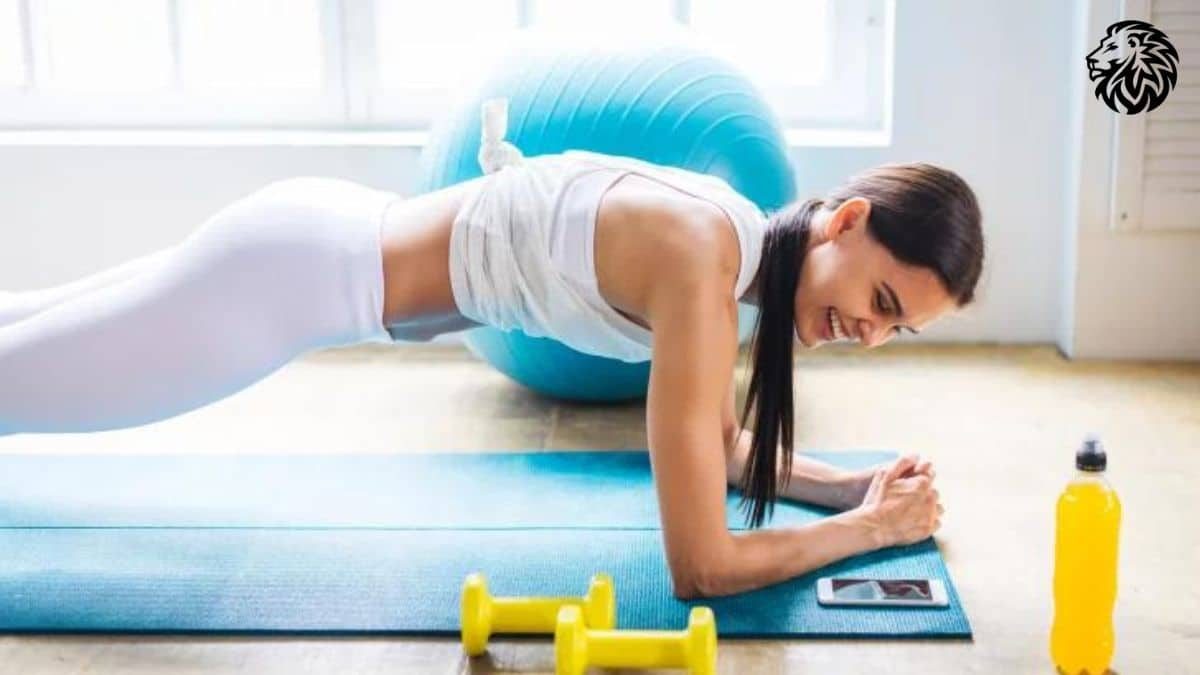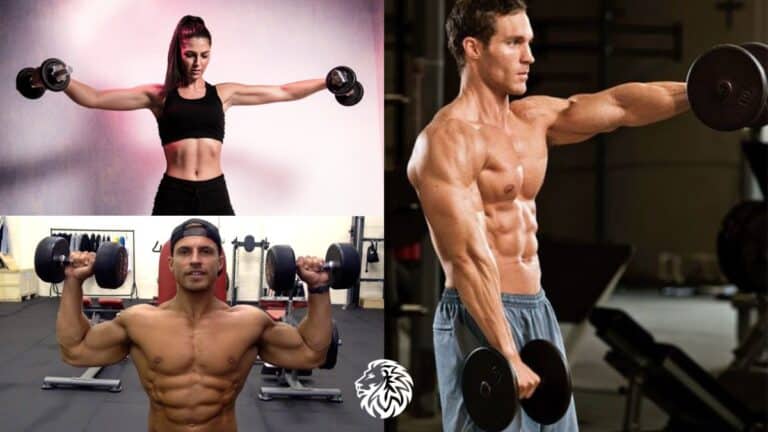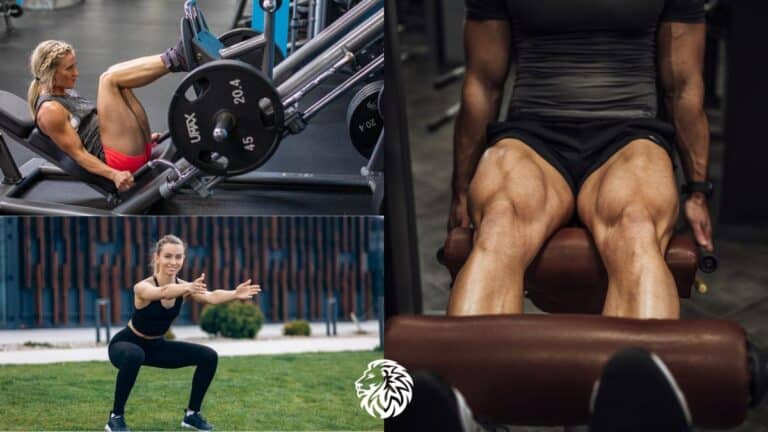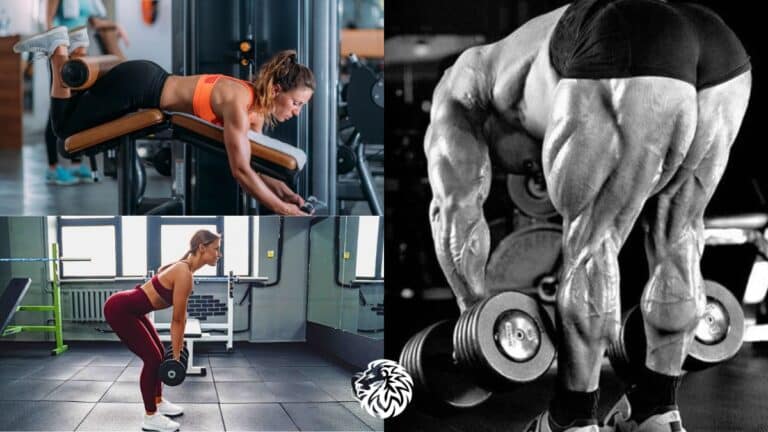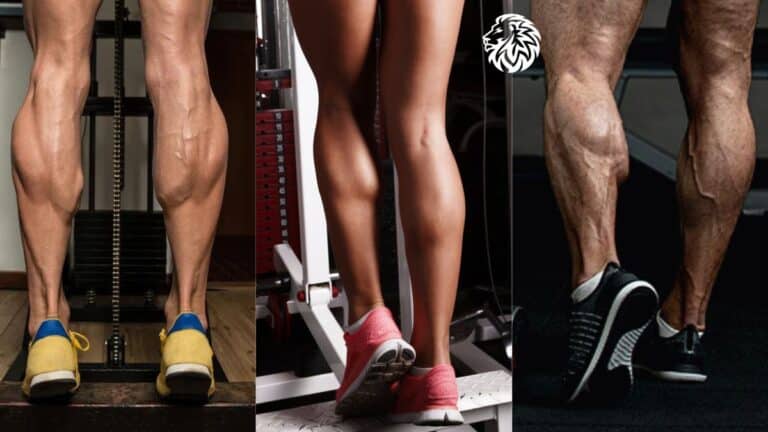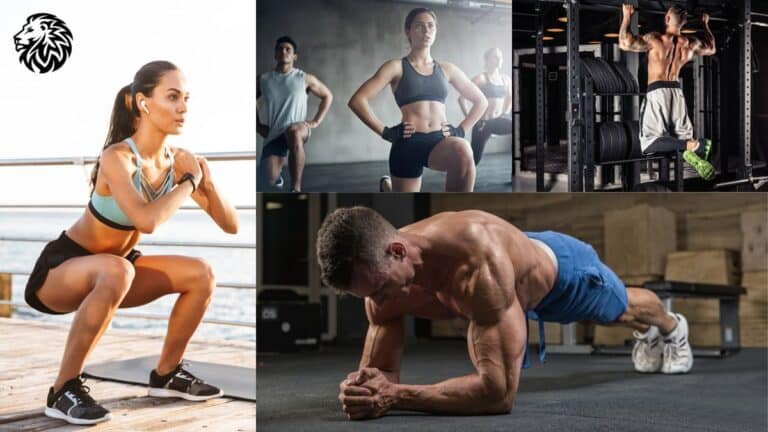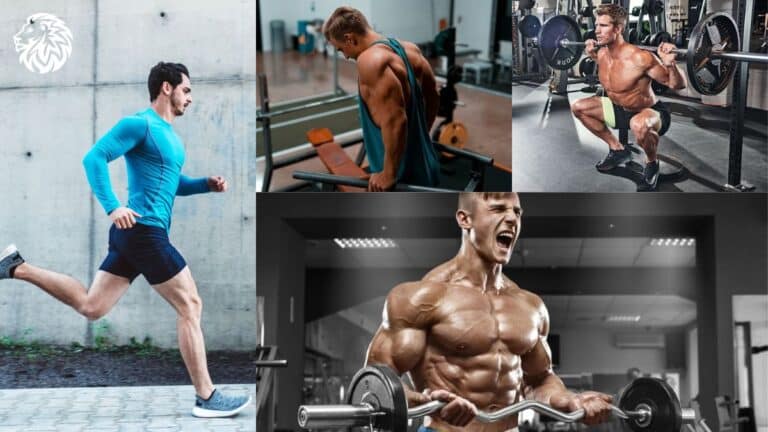Your abdominal muscles, or “abs” as most of us call them, are the heart and soul of your body’s core. Think of them as your body’s unsung heroes! They do so much, from helping you stand up straight to giving you the strength to pick up that heavy box from the floor. And hey, while having a chiseled six-pack might be a bonus, the real deal is keeping your body healthy and running smoothly.
With life moving at warp speed these days, home workouts have become a lifesaver for many of us. Not only do they help save some bucks and precious time, but they also let you break a sweat in your comfy zone. Remember when we thought we needed those fancy gym memberships or the latest equipment to get fit? Well, times have changed! All you need now is your own body weight, a sprinkle of determination, and voila – you’re on your way to getting fit right in your living room.
In this piece, we’re about to uncover seven fabulous tummy-toning exercises perfect for your cozy corner at home. Some will make you hold your pose, testing your patience, while others will get you moving and grooving. Whether you’re a fitness pro or just lacing up your workout shoes for the first time, there’s a little something here for you. So, ready to work on that core? Let’s dive in together! Here are 7 Amazing Abs Workouts You Can Do at Home.
1. Plank
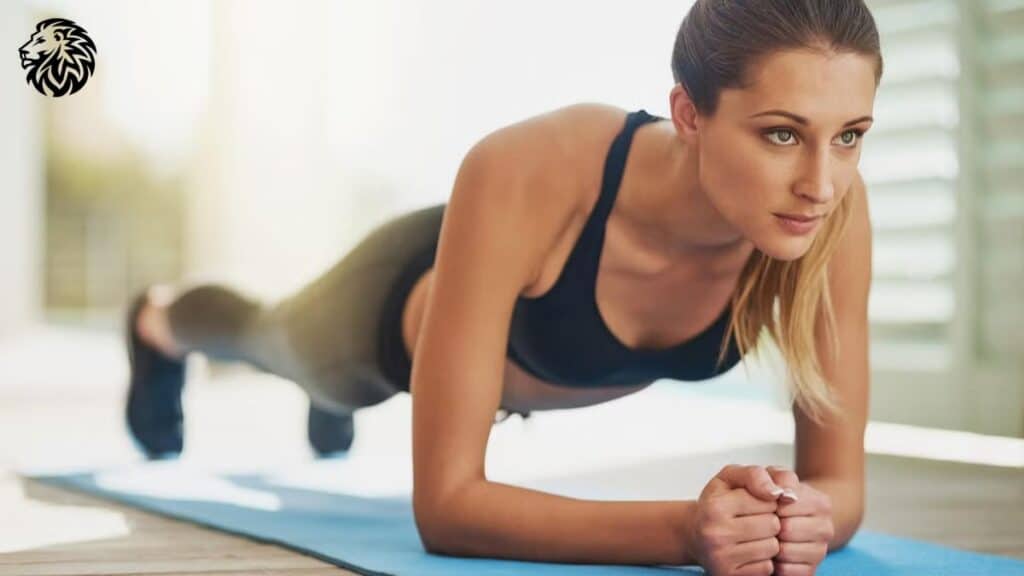
The plank, often deemed the quintessential core exercise, is a true test of stability and endurance. While its primary focus is on the abdominal muscles, the plank is a full-body exercise that demands coordination and strength from head to toe.
Description of the Exercise: The plank requires you to hold your body off the ground, using just your toes and forearms. Imagine a straight line from your head, through your back, and down to your heels. This “plank” position is where the exercise gets its name.
Proper Form and Technique:
- Start by lying face down on the floor or on a mat.
- Position your elbows directly under your shoulders and spread your fingers for balance.
- Extend your legs back, placing your toes on the ground.
- Engage your core, glutes, and thighs, then push yourself up, lifting your body off the ground.
- Maintain a straight line from your head to your heels. Ensure your hips aren’t sagging down or piking up.
- Hold this position, remembering to breathe steadily.
Variations for Beginners and Advanced:
- Beginner: If a full plank is too challenging, you can start with your knees on the ground to reduce the weight you’re holding up. As you build strength, you can progress to a full plank.
- Side Plank: This variation focuses more on the oblique muscles. Lie on your side with one elbow directly below your shoulder. Stack your legs one on top of the other and push your hips off the ground, forming a straight line from head to feet. For added difficulty, raise the top arm or leg.
- Extended Plank: An advanced version where you place your hands further out in front of you, increasing the demand on your core.
Benefits Specific to the Plank:
- Core Strength: The plank primarily targets the rectus abdominis, obliques, and transverse abdominis, which collectively contribute to a strong midsection.
- Postural Improvement: Regular planking can lead to better posture as it strengthens the muscles that keep you upright.
- Full-body Engagement: Though it’s a core exercise, the plank also engages muscles in your shoulders, chest, back, glutes, and legs.
- Flexibility Enhancement: Holding a plank can also help in increasing flexibility in posterior muscle groups as they stretch and expand.
- Bone and Joint Health: Being an isometric exercise, the plank helps in strengthening bones and joints without causing strain, making it suitable for people of all ages.
When executed with dedication and proper form, the plank is a powerhouse move that lays a solid foundation for advanced fitness pursuits.
2. Russian Twists
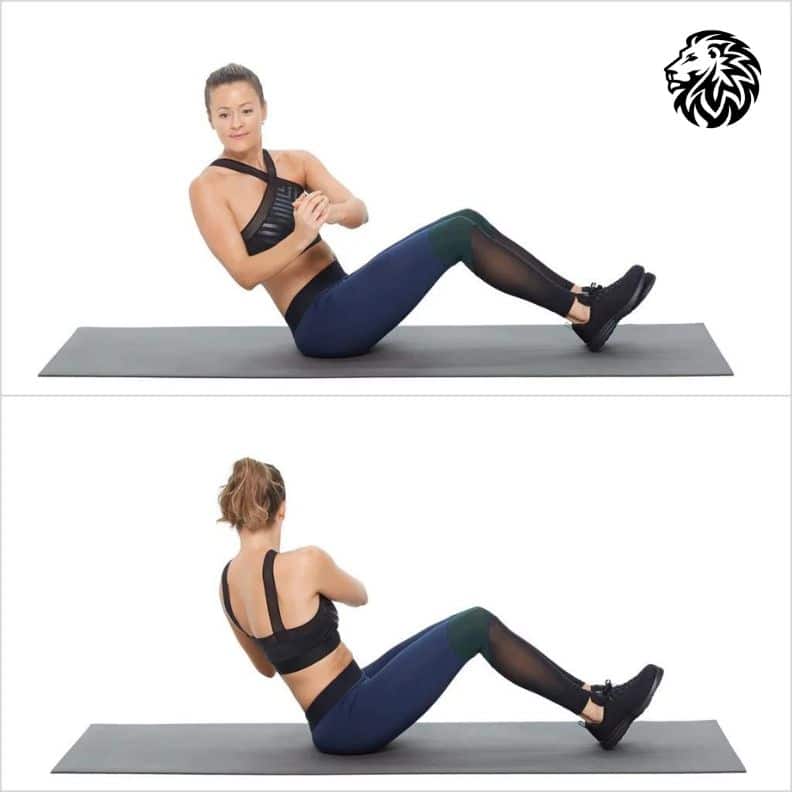
A popular and effective exercise to target the oblique muscles, Russian Twists incorporate a rotational movement that challenges the core, particularly the muscles on the sides of the abdomen.
Description of the Exercise: Seated on the floor with knees bent, the individual leans back slightly, ensuring their spine is straight, and rotates their torso side to side, typically touching the floor beside them during each rotation.
Instructions on Proper Form with Emphasis on Protecting the Spine:
- Start by sitting on the floor with your knees bent and feet flat.
- Tilt back slightly, lifting your feet off the ground if possible, engaging your core. It’s essential to keep the spine straight and not rounded.
- Clasp your hands together in front of you or hold a weight if you’re using one.
- Rotate your torso to the right, aiming to touch the ground next to your hip with your hands or weight.
- Return to the center and then rotate to the left.
- The motion should come from the rotation of the torso and not just the arms moving side to side.
- Ensure you’re not placing undue stress on the spine. It’s crucial to maintain a straight back and not slouch.
How to Incorporate Weights or Household Items to Increase Resistance:
- Dumbbells: If you have access to dumbbells, you can hold one with both hands as you perform the twist.
- Water Bottles: Fill a water bottle and use it as a makeshift weight.
- Books: Hold a thick book or stack a few thinner ones to achieve the desired weight.
- Bag of Rice or Beans: These pantry items can serve as handy weights. Just ensure the bag is sealed!
- Medicine Ball: If you happen to have one, it’s an excellent tool for this exercise, offering good grip and weight.
Benefits for Oblique Muscles:
- Targeted Engagement: The rotational movement of Russian Twists directly engages the oblique muscles, promoting strength and tone.
- Improved Waistline Definition: As the obliques develop, they can enhance the V-taper look, giving more definition to the waistline.
- Enhanced Functional Strength: Strong obliques assist in daily activities that require twisting or turning, such as reaching behind in the car or lifting objects.
- Injury Prevention: Strengthening obliques can offer better support to the spine, potentially reducing the risk of injuries or strains in the back.
Incorporating Russian Twists into your regular routine can provide a comprehensive core workout, emphasizing the often-neglected oblique muscles. Just remember to prioritize form over speed or resistance to ensure safety and effectiveness.
3. Bicycle Crunches
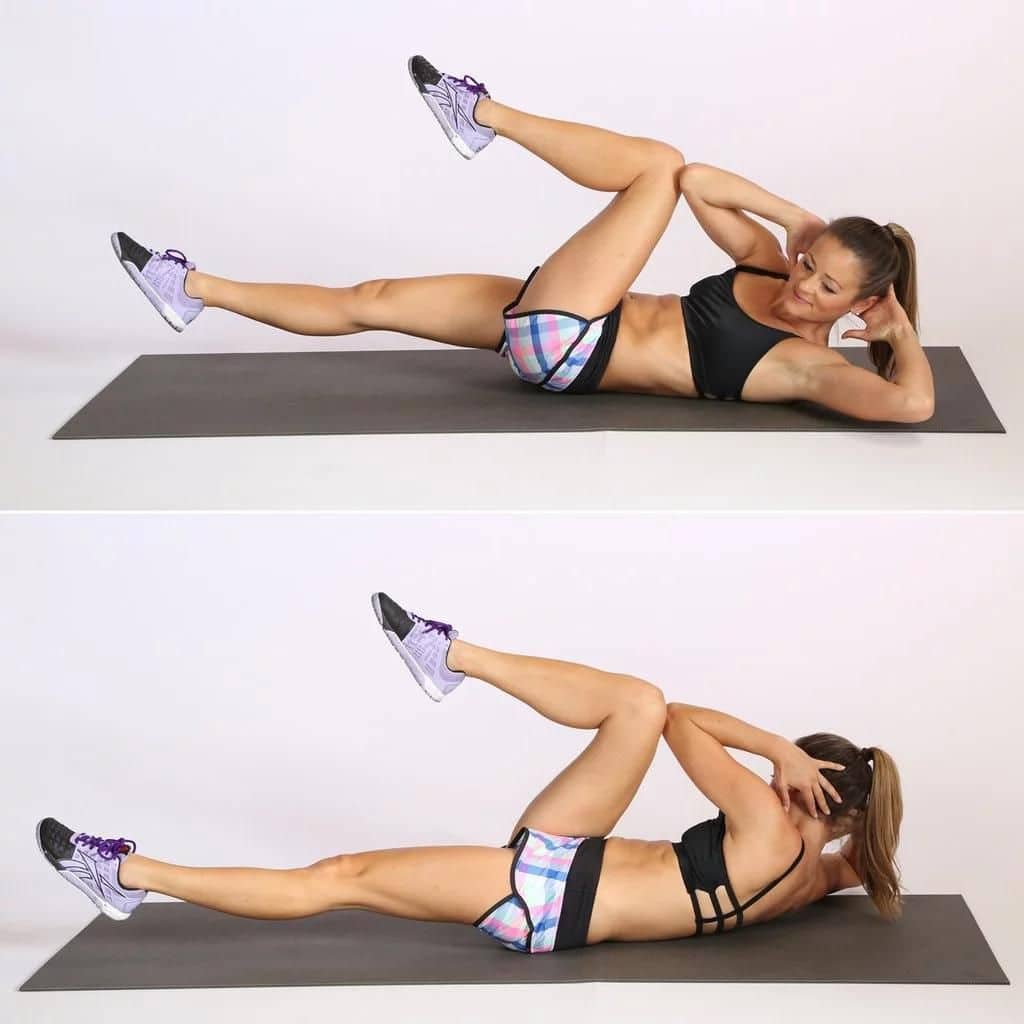
A dynamic blend of rotation and leg movement, bicycle crunches are a fan-favorite when it comes to core exercises. They are not only efficient in targeting various abdominal muscles simultaneously but also add an element of fun to the routine.
Description of the Exercise: Bicycle crunches involve a combination of a traditional crunch and leg motion, mimicking the pedaling of a bicycle. The elbow-to-knee action during the exercise places emphasis on both the upper and lower abs, as well as the obliques.
Step-by-step Guide to Correct Form:
- Starting Position: Lie flat on your back on a mat, ensuring your lower back is pressed down. Place your hands behind your head lightly cradling it, but be careful not to pull on your neck.
- Engage Core: Before you begin, draw your belly button towards your spine to engage your core. This helps in maintaining stability throughout the exercise.
- Leg Movement: Lift both knees towards your chest. Start by straightening your right leg out, keeping it a few inches above the ground, while the left knee remains bent.
- Elbow to Knee: As you extend your right leg, rotate your upper body to bring your right elbow towards your left knee. Try to touch them together, but don’t strain if they don’t meet.
- Switch Sides: Now, reverse the movement. Bend your right leg and straighten your left leg. Simultaneously, rotate to bring your left elbow towards your right knee.
- Continuous Motion: Keep alternating sides in a fluid, pedaling motion, all while ensuring your lower back remains pressed to the floor.
Highlighting the Importance of Controlled Movement: While the urge might be to go faster, thinking it’ll provide a better workout, bicycle crunches are most effective when performed in a controlled manner. Quick, jerky movements can strain the neck and back and may not engage the core muscles as efficiently. A steady, deliberate pace ensures optimal muscle engagement and reduces the risk of injury.
Benefits in Targeting Both Upper and Lower Abs:
- Comprehensive Core Engagement: The rotation targets the obliques, the crunching motion engages the upper abs, and the leg movement works the lower abs.
- Caloric Burn: The dynamic nature of the exercise means more muscles are at play, leading to a higher calorie burn compared to static exercises.
- Flexibility: The rotation in bicycle crunches aids in enhancing the flexibility of the waist and spine.
- Functional Fitness: This exercise not only builds aesthetic muscles but also promotes balance, coordination, and stability that are beneficial in everyday activities.
Bicycle crunches, with their multifaceted approach to core engagement, offer a full package in abdominal training. Regular inclusion of this exercise can pave the way for a toned, strong, and flexible midsection.
4. Mountain Climbers
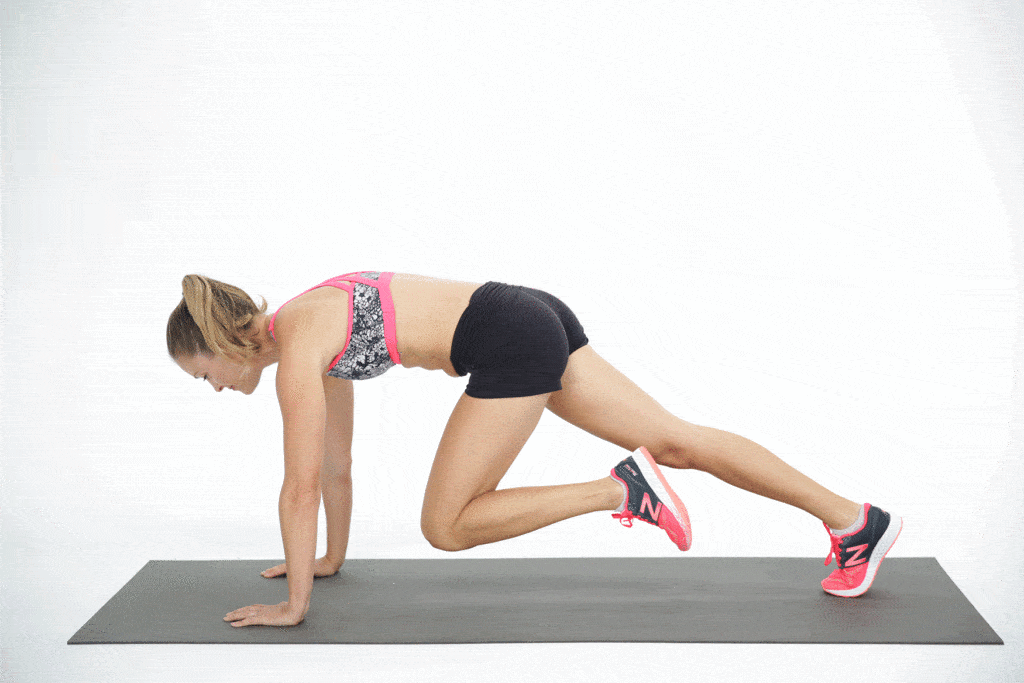
A dynamic fusion of cardio and strength training, mountain climbers are a fantastic addition to any fitness routine. By simulating the motion of climbing, this exercise offers a full-body challenge with a special emphasis on the core.
Description of the Exercise: Mountain climbers begin in a plank position and involve rapidly pulling each knee towards the chest, alternating legs. This movement increases the heart rate, tests endurance, and delivers a solid core workout.
Importance of Maintaining a Stable Core During the Movement: Stability in the core is crucial for a few reasons:
- Protection: A stable core safeguards the spine, reducing the risk of back injuries.
- Efficiency: Engaging the core ensures that the primary muscles targeted (the abdominals) are activated throughout the exercise.
- Form: A tight core helps maintain the proper form, ensuring the body remains in a straight line from head to heel, preventing the hips from sagging or piking up.
Variations for Intensity:
- Cross-Body Mountain Climbers: Instead of bringing the knee straight forward, twist and bring each knee towards the opposite elbow. This introduces a rotational element targeting the obliques more intensely.
- Spiderman Climbers: Pull the knees outside, aiming for the same-side elbow. This variation focuses more on the obliques and the side abs.
- Plyometric (Jumping) Mountain Climbers: Add a small jump as you switch legs, increasing the cardio intensity.
- Sliders Mountain Climbers: Using sliders or towels under your feet on a smooth surface, slide your feet in and out. This adds a friction element, increasing resistance.
Full-body Benefits with a Focus on the Core:
- Core Activation: The continuous pulling of the knees engages the entire core, especially the lower abs.
- Cardiovascular Boost: The dynamic movement gets the heart rate up, offering cardiovascular benefits similar to high-intensity interval training.
- Upper Body Engagement: Holding the plank position demands strength from the shoulders, chest, and triceps.
- Leg and Glute Activation: The rapid movement of the legs engages the quadriceps, hamstrings, and glutes.
- Enhanced Metabolism: Due to its high-intensity nature, mountain climbers can increase metabolic rate, aiding in fat burn.
- Coordination and Agility: The alternating leg motion hones body coordination and boosts agility.
Mountain climbers, in essence, are a mini full-body workout packed into one exercise. When executed with diligence and correct form, they can vastly enhance core strength, cardiovascular endurance, and overall muscle tone.
5. Leg Raises
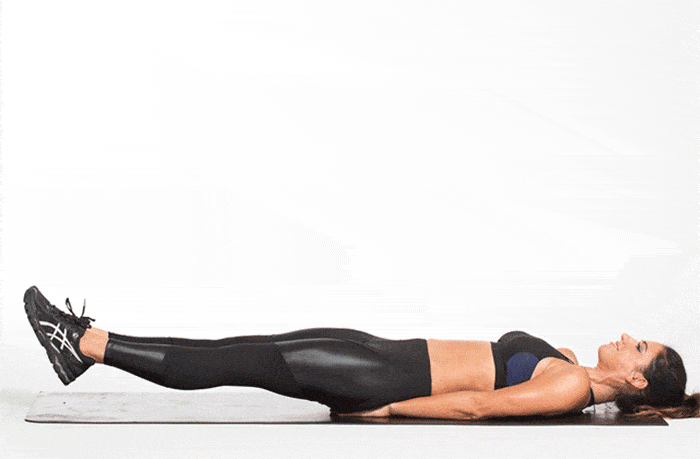
Leg raises are a classic and effective exercise that zeros in on the lower abdominal muscles. By lifting and lowering the legs using the strength of the core, you engage those hard-to-reach lower abs, which are often neglected in many core routines.
Description of the Exercise: Leg raises involve lying flat on your back, and using your core muscles, lifting your legs to a 90-degree angle and then slowly lowering them back down without letting them touch the ground.
Tips to Keep the Lower Back Pressed to the Floor:
- Engage Your Core: Before beginning the movement, draw your belly button towards your spine. This helps in keeping the lower back flush against the floor.
- Place Hands Under Hips: For added support, you can place your hands, palms down, under your hips. This slight elevation helps in maintaining the natural curve of your spine and prevents arching.
- Head and Shoulders: Keep your head flat on the ground. Lifting it can strain the neck and disrupt your spine’s alignment.
- Controlled Movement: Avoid using momentum. Raise and lower your legs slowly, focusing on using your core muscles. This control not only maximizes muscle engagement but also minimizes the risk of the lower back lifting.
- Breathing: Exhale as you lift your legs and inhale as you lower them. Proper breathing aids in core engagement and keeps the lower back grounded.
Different Levels of Leg Raises:
- Single Leg Raises: A great starting point for beginners. Lie flat and raise one leg at a time while keeping the other bent or flat on the ground. This reduces the strain on the back and allows you to focus on form.
- Double Leg Raises: This is the standard version where both legs are raised and lowered simultaneously. It requires more strength and stability in the core.
- Hanging Leg Raises: For those looking for a challenge, this variation involves hanging from a bar and lifting the legs. It engages not only the lower abs but also the hip flexors and obliques. Keeping the body steady requires solid core activation.
Emphasis on Lower Abs Activation: Leg raises are particularly effective for the lower abs due to the direction and force of the movement. Since the lower abs play a significant role in hip flexion (raising your legs), this exercise directly targets and isolates that muscle group. Furthermore, the challenge of preventing the legs from touching the ground at the bottom of the movement keeps the lower abs engaged continuously.
Leg raises, when performed with proper technique, offer a formidable challenge to the lower abs. Regular incorporation of this exercise can lead to a more defined and strengthened lower abdominal region.
6. Flutter Kicks
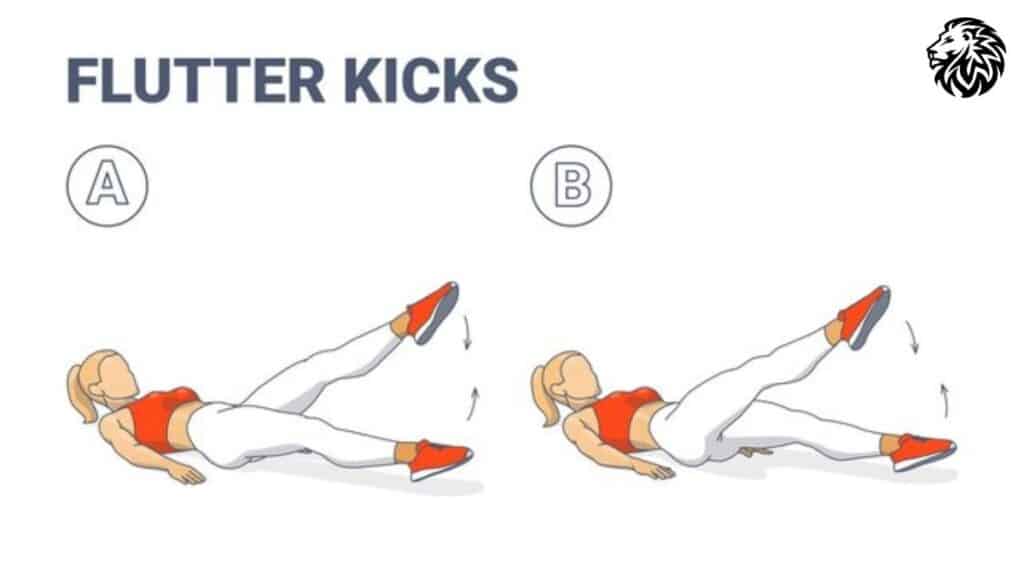
Flutter kicks are a dynamic core exercise that primarily targets the lower abdominals and hip flexors. Mimicking a scissor-like movement, this exercise brings a sense of rhythm to core workouts and can be both fun and challenging.
Description of the Exercise: While lying on your back, flutter kicks involve lifting both legs off the ground and making small, rapid, alternating up-and-down kicking motions, similar to a swimmer’s flutter kick in water.
Proper Technique and Posture:
- Starting Position: Lie flat on your back on a mat, ensuring your lower back is pressed down to avoid any strain.
- Hands Position: For added stability, place your hands, palms down, under your glutes or hips.
- Engage Your Core: Before you start the movement, activate your core by drawing your belly button towards your spine.
- Leg Movement: Lift both legs off the ground to about 6 inches. Begin the fluttering motion by alternately raising one leg higher while lowering the other, then switch. The movement should be smooth and controlled.
- Head and Neck: It’s essential to keep your head, neck, and shoulders relaxed on the ground to prevent any strain. However, if you wish for added intensity, you can lift your head and shoulders off the ground, ensuring you’re lifting using your core and not straining your neck.
Importance of Pacing and Breathing:
- Pacing: While flutter kicks can be done rapidly, it’s crucial to find a pace that allows for controlled movement and sustained exercise. Going too fast can lead to loss of form and potential strain.
- Breathing: Proper breathing plays a vital role in core engagement and stamina. Inhale for a count of 3-4 kicks and exhale for the next 3-4 kicks. This rhythm helps maintain a steady oxygen flow and aids in keeping the core engaged.
Working the Lower Abs and Hip Flexors:
- Lower Abs: The act of lifting your legs and maintaining them above the ground relies heavily on the lower abdominal muscles. The continual motion of the kicks ensures that the lower abs are engaged throughout the duration of the exercise.
- Hip Flexors: The “kicking” motion activates the hip flexors, which are responsible for raising your legs. Over time, this can aid in improving the strength and flexibility of the hip flexors, benefiting overall leg mobility and stability.
Incorporating flutter kicks into your routine can provide an efficient and rhythmic workout for the lower abdominals and hip flexors. When performed correctly, they offer a unique blend of endurance, strength, and rhythm, paving the way for a toned and strong core region.
7. Sit-Ups with a Twist
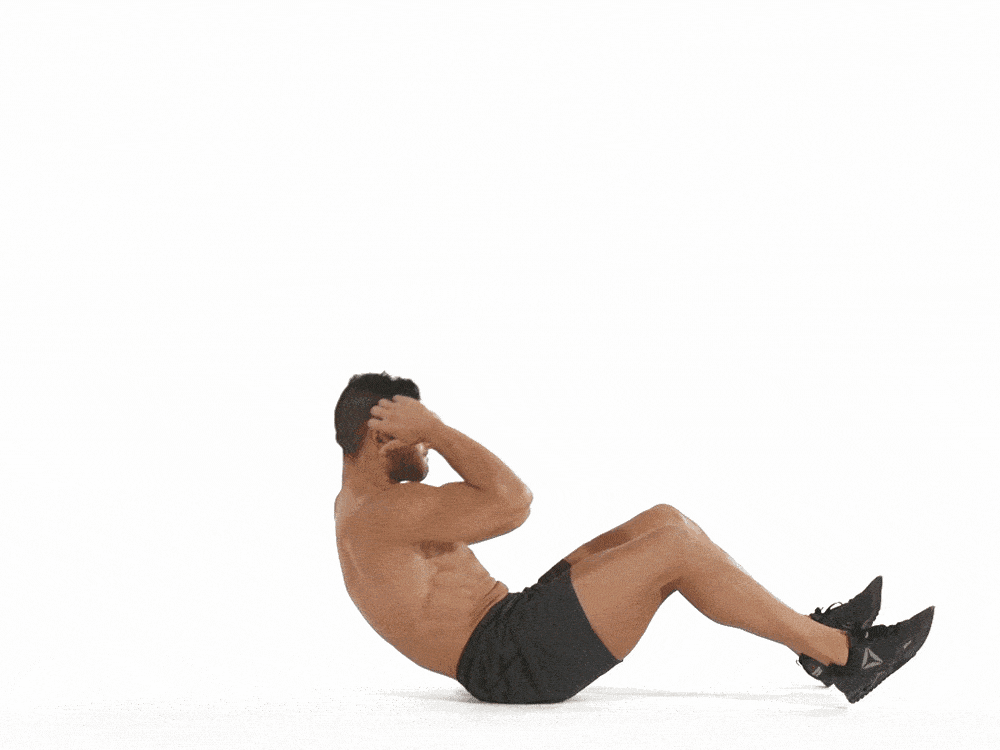
Marrying the traditional sit-up with an added rotational twist, this exercise elevates the core workout to engage not just the front abdominal wall but also the obliques. The integration of rotation with the upward movement offers a comprehensive abdominal workout.
Description of the Exercise: Starting from a regular sit-up position, the movement involves rising to a seated position, but as you ascend, you incorporate a twist to one side, aiming to touch your opposite elbow to the opposite knee.
Technique to Ensure Maximum Engagement and Safety:
- Starting Position: Lie on your back with your knees bent and feet flat on the ground. Position your feet about hip-width apart. Place your hands behind your head or cross them over your chest.
- Engage Your Core: Before initiating the sit-up, tighten your abdominal muscles by drawing your belly button toward your spine.
- Rise with Rotation: As you start lifting your upper body, rotate your torso to one side. Aim to touch your right elbow to your left knee (or as close as possible).
- Controlled Descent: Lower yourself back down with the same controlled movement, ensuring you return to the starting position without any rotation.
- Alternate Sides: On the next repetition, twist to the opposite side. Continue alternating with each sit-up.
Incorporating a Twist to Engage Obliques: The addition of the rotational movement is key to activating the oblique muscles. While traditional sit-ups mainly target the rectus abdominis (front abdominal wall), the twist introduces lateral movement which requires the obliques to engage and work. This ensures a more holistic core workout.
Benefits of Combining Traditional Sit-Ups with a Rotational Movement:
- Comprehensive Core Engagement: By combining two movements, you’re targeting multiple muscle groups in the core – the rectus abdominis from the sit-up and the obliques from the twist.
- Enhanced Muscle Definition: Working more muscle groups can lead to a more defined midsection as both the central abs and the sides are being sculpted.
- Improved Functional Fitness: Rotational movements mimic many real-life actions, like turning to grab something or swinging a racket. Training with rotational movements can enhance agility and movement efficiency in daily activities.
- Increased Challenge: The added twist introduces a new dimension to the traditional sit-up, making it more challenging and helping to boost endurance and strength in the core.
- Promotion of Spinal Health: Rotational exercises, when done correctly, promote flexibility and mobility in the spine, which is essential for overall back health.
In summary, sit-ups with a twist offer an efficient way to enhance the benefits of the traditional sit-up. By engaging a wider range of core muscles, they can pave the way for a stronger, more agile, and sculpted midsection.
Tips for Effective Home Workouts

Home workouts have become increasingly popular, offering convenience, flexibility, and, for many, an escape from crowded gyms. However, to ensure these workouts are effective, certain considerations and practices need to be in place.
- The Importance of Consistency:
- Routine Setting: Establish a consistent workout schedule, whether it’s daily, every other day, or specific days in a week. This ensures that exercise becomes a regular part of your routine.
- Track Progress: Keeping a log of your workouts helps maintain consistency, provides motivation, and allows you to monitor your progress over time.
- Stay Committed: Understand that results come over time, not overnight. Consistency is key to seeing lasting and progressive changes in your fitness and overall health.
- Setting Up a Designated Workout Space:
- Clear Distractions: Your workout space should be free of unnecessary distractions. This allows you to focus entirely on your workout.
- Equip Appropriately: Depending on the type of workout, have the necessary equipment ready—dumbbells, yoga mat, resistance bands, etc. Even if you’re doing bodyweight exercises, a comfortable mat can make a significant difference.
- Safety: Ensure the area is safe. Remove any items you could trip over, and if you’re using weights, store them properly post-workout to prevent accidents.
- Listening to Your Body and Knowing When to Rest:
- Rest is Vital: Understand that muscles grow and repair during rest periods, not while working out. Overtraining can lead to injuries, fatigue, and burnout.
- Body’s Feedback: Pay attention to signs from your body. Muscle soreness can be expected, especially after trying a new exercise. However, pain, especially sharp or persistent pain, is a signal to stop and reevaluate.
- Stay Hydrated and Nourished: Ensure you’re consuming enough water before, during, and after your workouts. Proper nutrition supports recovery and energy levels.
- Incorporating Other Exercises for a Balanced Routine:
- Variety is Key: While it’s great to have favorite exercises or routines, it’s essential to switch things up occasionally. This prevents plateaus and ensures you’re working various muscle groups.
- Include All Fitness Components: A well-rounded fitness routine includes strength training, cardiovascular exercises, flexibility exercises (like stretching or yoga), and balance and stability workouts.
- Stay Inspired: Every now and then, try a new type of exercise. Whether it’s a new HIIT routine, a dance workout, or pilates—exploring different workouts keeps things exciting and challenges your body in new ways.
- Social Aspect: Even if you’re working out at home, consider joining virtual classes or doing online challenges. This can provide the camaraderie of group workouts and additional motivation.
While home workouts offer a myriad of advantages, it’s essential to approach them with the same discipline and planning as you would with gym workouts. A structured, varied, and consistent approach, combined with listening to your body’s needs, ensures that home workouts are not only convenient but also effective.
Conclusion
Embarking on a journey to sculpt and strengthen the core doesn’t necessitate grand gym memberships or specialized equipment. As highlighted in our discussion, with just seven core-centric exercises—plank, Russian twists, bicycle crunches, mountain climbers, leg raises, flutter kicks, and sit-ups with a twist—you have a powerful arsenal to challenge and train your abdominal muscles right in the comfort of your home.
Consistency is the key. Incorporate these exercises into your fitness routine, whether in isolation or combined into an intense core circuit, and watch as they pave the way to a more toned and robust midsection. Not only will these workouts sculpt your abs, but they will also bring forth the myriad benefits of a strong core. Beyond aesthetics, a robust core forms the foundation for overall body strength, improved posture, reduced risk of injuries, and enhanced athletic performance.
Remember, a strong core transcends mere physical appearance. It’s the epicenter of your body’s strength and stability, playing an invaluable role in virtually every motion you make and supporting your body in its daily functions. So, take the plunge, weave these exercises into your daily or weekly routine, and embrace the path to better health, strength, and well-being. The journey might be challenging, but the rewards—a resilient core and a rejuvenated sense of health—are undeniably worth it.
